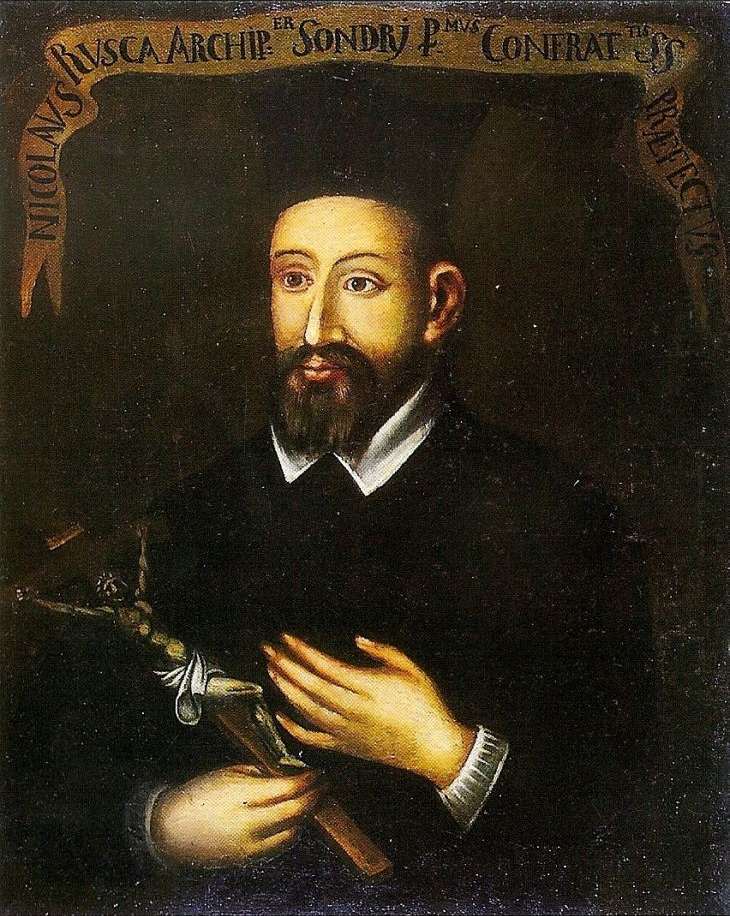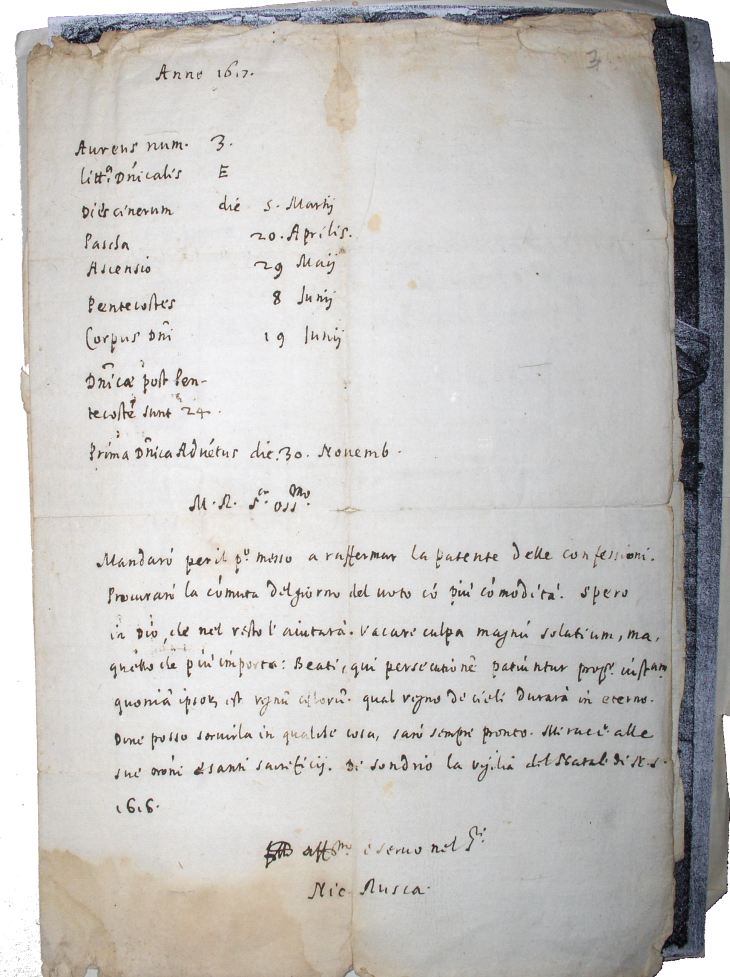 The oldest effigy of Nicolò Rusca preserved in the archpriest's house in Sondrio.
The oldest effigy of Nicolò Rusca preserved in the archpriest's house in Sondrio.
Half way through the sixteenth century, the Valmalenco was a group of communities corresponding more or less to the current municipalities, which depended from a religious viewpoint on the archpriest of Sondrio, who was also the parish priest of the valley.
Already throughout the fourteenth and fifteenth centuries, churches had arisen which were to become the parish churches a century later:
Saints Giacomo and Filippo in Chiesa,
San Giovanni Battista in Lanzada,
Saints Rocco, Fabiano and Sebastiano in Caspoggio,
Santa Maria Nascente in Torre di S. Maria.
S. Gottardo di Spriana dipendeva dalla cura d’anime di Montagna in Valtellina.
When Nicolò Rusca arrived in Sondrio, the situation of the local church, especially that of the Valmalenco, was critical to say the least.
Absent clergy, most of whom were ignorant and corrupt, were unwilling to take on the care of the souls of such isolated Alpine communities that were so difficult to reach for meagre wages.
They had contributed to the decline in local religious feeling, which increasingly fed off popular beliefs and superstitions.
The unfortunate priest, who agreed to live in the Valmalenco, was obliged to ensure the liturgical service and sacraments (baptisms, weddings, funerals) not only in Chiesa and in Lanzada, but also in Caspoggio and Torre.
Thus, his spiritual presence was so rare that the communities were literally left to their own devices.
 Letter signed by Nicolò Rusca. 1617.
Letter signed by Nicolò Rusca. 1617.
Added to this was the diffusion of the Protestant ideas which took root in the Valmalenco especially among the wealthier, more powerful families in the society of the period.
The two Evangelical communities of Chiesa and Lanzada joined forces in the valley and forced the parish priest, Nicolò Rusca, to firmly face the religious situation in the Valmalenco with determination.
Rusca made sure the souls of the people in each of these two communes were entrusted to motivated priests, who were well-prepared to face the double problem of raising local Catholic spirituality on the one hand and of curbing the spread of Protestant belief on the other.
Thus, he made use of two deeply cultured and extremely well-prepared theologians, Giovanni Cilichini in Lanzada and Giovanni Tuana in Chiesa.
As in the entire parish of Sondrio entrusted to him, he also ensured continual liturgical and sacramental assistance.
Popular devotion, especially the veneration of the Holy Sacrament and that of the Holy Rosary, was imbued with new vigour and impetus.
He himself went regularly to the valley, expecially to celebrate the festivals of the patron saints of the different communities, and he personally tended to the difficult relationships with the Protestants in the valley.
He was so highly esteemed and his judgement deemed so authoritative that both within and outside the Valmalenco, Nicolò Rusca was often called to settle public and private arguments.